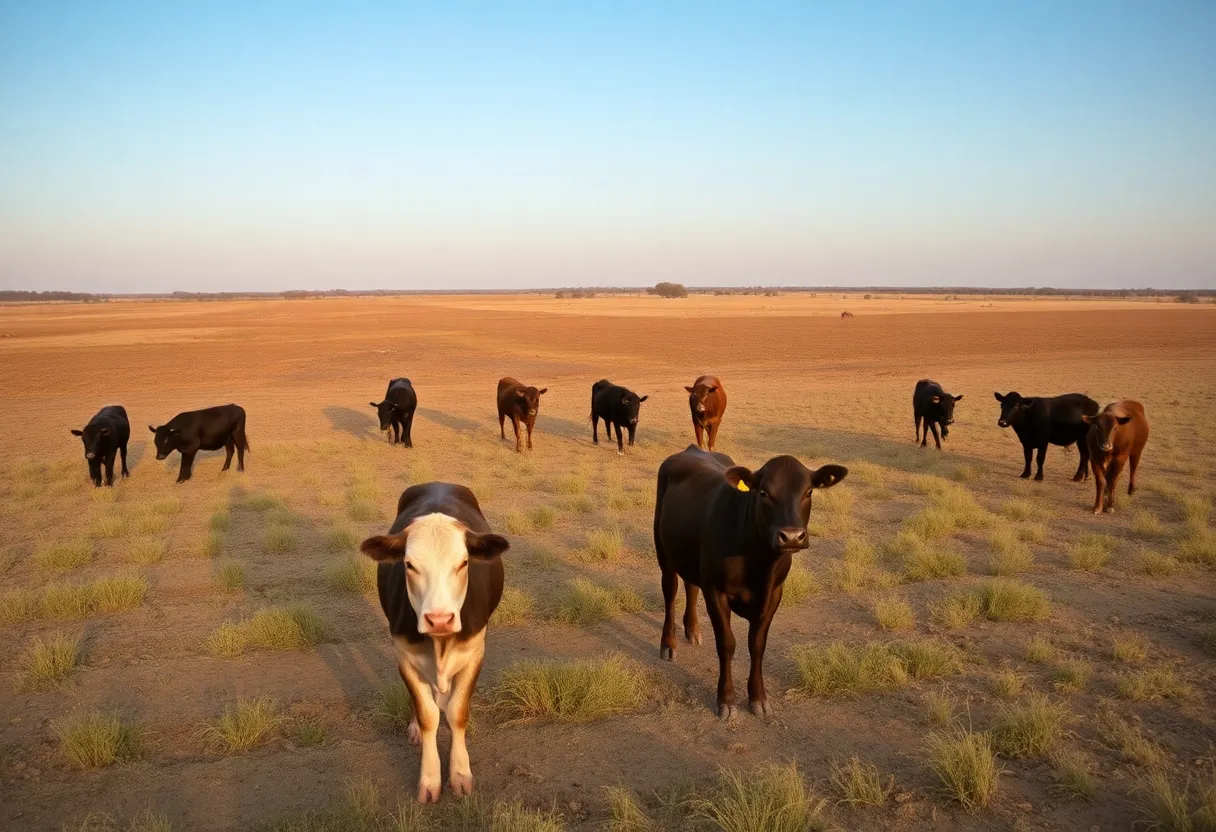Tulsa, Oklahoma, October 23, 2025
Ranchers in Oklahoma are sounding the alarm over President Trump’s proposal to increase beef imports, fearing it could harm the cattle market and threaten family-owned farms. During a statewide agricultural forum, concerns were raised about an influx of cheaper imported beef driving down domestic prices, risking the livelihoods of over 10,000 family operations already strained by ongoing drought challenges. Economists predict an 8% potential drop in cattle values, prompting calls for protective tariffs to safeguard the local beef industry.
Oklahoma Ranchers Raise Alarms Over Proposed Beef Import Surge
Tulsa, Oklahoma – Local ranchers have expressed significant concerns regarding President Trump’s proposal to increase beef imports, warning that it could destabilize the cattle market and threaten family-run operations across the state. Discussions at a recent statewide agricultural forum highlighted fears that an influx of cheaper foreign meat might drive down domestic prices, exacerbating existing economic pressures in Oklahoma’s vital beef sector.
Impact on Local Farmers
The proposal has sparked immediate worry among Oklahoma’s agricultural community, where over 10,000 family operations rely on stable cattle values for their livelihoods. Ranchers attending the forum noted that the potential for increased imports comes at a precarious time, with ongoing drought challenges already straining resources and profitability. An influx of lower-cost beef from abroad could flood the market, reducing demand for locally produced meat and leading to financial hardship for producers who have invested heavily in domestic herds.
Economists have projected a potential 8% drop in cattle values should the policy take effect, a decline that could ripple through rural economies dependent on livestock sales. This estimate underscores the vulnerability of small to mid-sized ranches, which form the backbone of Oklahoma’s agricultural output. Without intervention, many operations might face reduced margins, forcing some to scale back or exit the industry altogether.
Efforts to Protect the Industry
In response to these threats, lawmakers are advocating for the introduction of protective tariffs aimed at shielding the state’s beef production from unfair foreign competition. These measures would aim to level the playing field by imposing duties on imported products, thereby supporting local prices and preserving jobs within the sector. The push for tariffs reflects a broader effort to prioritize domestic agriculture amid global trade uncertainties.
The beef sector in Oklahoma generates approximately $2 billion annually, making it a cornerstone of the state’s agricultural economy. This industry not only sustains farming families but also contributes to related sectors such as processing, transportation, and equipment supply. Any disruption could have cascading effects, potentially increasing costs for consumers while diminishing the economic contributions of rural communities.
Background on the Proposal
President Trump’s idea to boost beef imports stems from a desire to address domestic supply shortages and control inflation in meat prices. However, critics in the agricultural heartland argue that the approach overlooks the long-term consequences for American producers. Oklahoma, with its vast plains and established ranching traditions, stands particularly at risk due to its heavy reliance on cattle as a primary commodity.
The statewide forum in Tulsa served as a key platform for ranchers to voice these issues, drawing participants from across the state. Leaders in the rancher association emphasized the need for policies that balance import needs with protections for local growers. While the proposal remains under debate, the gathering amplified calls for federal support to navigate these challenges.
Broader Economic Context
Oklahoma’s agricultural landscape has long been defined by its beef production, which accounts for a significant portion of the nation’s output. The state benefits from favorable grazing conditions and a network of experienced producers, but recent years have brought hurdles like fluctuating feed costs and weather-related disruptions. The proposed import increase adds another layer of uncertainty, prompting stakeholders to seek assurances that domestic priorities will not be sidelined.
As discussions continue, the focus remains on finding a sustainable path forward. Ranchers hope that upcoming legislative sessions will address these concerns, ensuring the resilience of an industry that employs thousands and bolsters the local economy. Monitoring developments in trade policy will be crucial for those invested in Oklahoma’s agricultural future.
The situation highlights the delicate interplay between global trade dynamics and local farming realities. With the beef market at a potential tipping point, the coming months will be pivotal in determining how these policies unfold and their lasting impact on the state’s producers.
FAQ
What concerns have Oklahoma ranchers expressed about the beef import proposal?
Oklahoma ranchers have expressed significant concerns regarding President Trump’s proposal to increase beef imports, warning that it could destabilize the cattle market and threaten family-run operations across the state.
How many family operations in Oklahoma could be affected?
Over 10,000 family operations rely on stable cattle values for their livelihoods.
What challenges are ranchers already facing?
Ongoing drought challenges are already straining resources and profitability.
What potential economic impact has been estimated?
Economists have projected a potential 8% drop in cattle values should the policy take effect.
What actions are lawmakers taking?
Lawmakers are advocating for the introduction of protective tariffs aimed at shielding the state’s beef production from unfair foreign competition.
How important is the beef sector to Oklahoma’s economy?
The beef sector in Oklahoma generates approximately $2 billion annually, making it a cornerstone of the state’s agricultural economy.
Key Features of Oklahoma’s Beef Sector
| Feature | Description | Value |
|---|---|---|
| Family Operations Affected | Number of family-run ranches relying on stable cattle values | Over 10,000 |
| Current Challenges | Ongoing issues straining resources and profitability | Drought challenges |
| Projected Cattle Value Drop | Estimated decline if import policy is implemented | 8% |
| Annual Economic Contribution | Value generated by the beef sector | $2 billion |
| Proposed Protections | Measures to shield domestic production | Protective tariffs |





